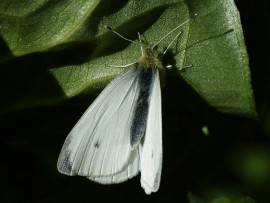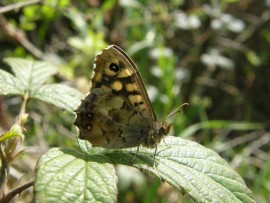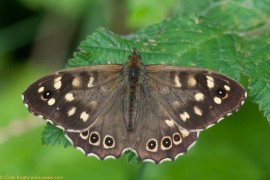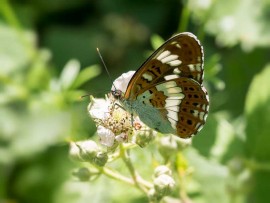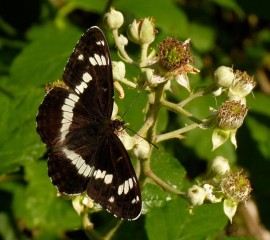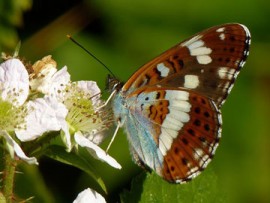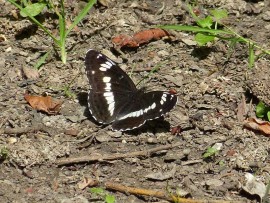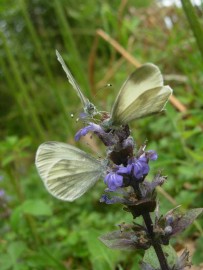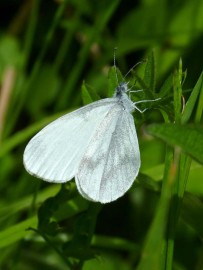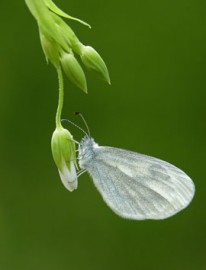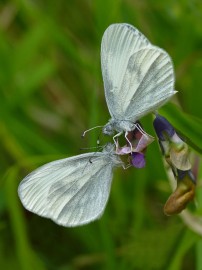Sussex butterfly species
| The Butterflies of Sussex | |||
|---|---|---|---|
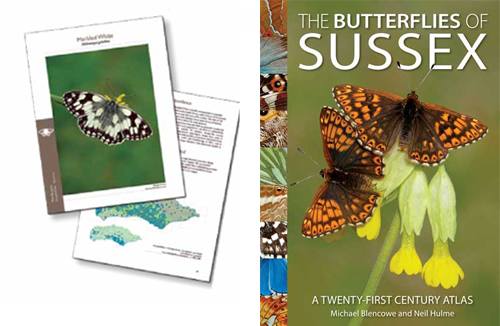 | |||
| BUY YOUR COPY HERE |
There were 52 species of butterfly recorded in Sussex during the 2010-14 survey conducted for the "Butterflies of Sussex" atlas. Of these 43 are native to Sussex, living out their entire life cycle within the county. Two migrant species, the Clouded Yellow and the Painted Lady are such regular visitors that we can consider them to be Sussex species. The remaining seven are rare or occasional visitors whose unpredicable appearance is often dependent upon the weather. These are Scarce Tortoiseshell, Camberwell Beauty, Long-tailed Blue, Geranium Bronze, Glanville Fritillary, Monarch and Swallowtail.
Many of the species of butterfly found in Sussex are relatively common such as the Small and Large White or the Speckled Wood. Others like the Duke of Burgundy, Adonis and Chalkhill Blues are dependent on the chalk downland that runs the length of Sussex, and particularly vulnerable to both changing farming practices and climate.
The high density of forestation in the Weald means that Sussex has a large number of woodland butterflies. Unfortunately many of these species evolved alongside forestry management techniques that have long since disappeared. Species such as the Pearl-bordered Fritillary and Wood White are perilously low in number whilst the Small Pearl-bordered Fritillary became extinct in Sussex in 2013.
You can find out more about Sussex lepidoptera in "The Butterflies of Sussex".
Adonis Blue
The Adonis Blue is a chalk downland specialist with Horseshoe Vetch the sole larval food plant. The brilliance of the blue together with the chequered white fringe of the outer wings readily identifies the male but the female can be confused with Chalkhill Blue. Adonis Blue is temperature constrained and requires a short turf which generally means a judicious amount of grazing. Downland requires careful management if this butterfly is to thrive. This species lives in close-knit colonies but generally is not inclined to wander which means that once lost it can take a very long time for re-colonisation to take place. First adults emerge sometime in May depending on the spring weather with numbers peaking in late May/early June. There is a second emergence in late summer at a time when many other species have disappeared, which of course helps with identification.
Find out more about the Adonis Blue on the Butterfly Conservation website.
Black Hairstreak
Black Hairstreak coming soon.
Find out more about the Black Hairstreak on the Butterfly Conservation website.
Brimstone
This butterfly may be seen on any warm sunny day in any month of the year but there are two distinct peaks. The first is in early spring when it is mostly seen around hedgerows and woodland rides and the second is in high summer when it becomes a frequent garden visitor, gorging on nectar before hibernating for the winter.
Find out more about the Brimstone on the Butterfly Conservation website.
Brown Argus
This is a relatively uncommon butterfly as the principal larval food plant is Common Rock-rose, which is largely confined to chalk downland that has been untouched by the plough or subjected to chemical fertilisers. With the occasional adoption of a variety of wild Geraniums there is scope for this species to breed in grassland away from downland. Identifying this lovely little butterfly is far from straightforward. In flight the silvery flash of the wings are distinctive but when perched it can easily be confused with other downland female 'blues', especially female Common Blues, some of which may be not much bigger than Brown Argus. Most colonies are very localised and small. This species is double brooded, with first adults emerging from early April to late May. However, peak numbers are generally recorded between mid-May and mid-June, with a second peak between late July and mid-August.
Find out more about the Brown Argus on the Butterfly Conservation website.
Brown Hairstreak
Chalk Hill Blue
A common butterfly of flower-rich, chalk downland the male Chalkhill Blue with its very pale blue wings is easy to identify. The chocolate brown females can pose problems if other blues occupy the same location. Distinct chequering to the white fringes along the wing edges narrows the possibilities to Chalkhill Blue and Adonis Blue. However, the female Chalkhill Blue is slightly larger than the Adonis Blue and the spots around the margins of the upper wings are edged in white, not blue. There is one emergence for this species with first adults typically recorded in early July and lasting well into September. Chalkhill Blues live in discrete isolated colonies but the occasional male is prone to wander and may be seen far away from the nearest breeding site. If Horseshoe Vetch is abundant and lush (as it was in Sussex in 2012) some colonies of Chalkhill Blue may number in the many hundreds of thousands. Truly an astonishing sight.
Find out more about the Chalk Hill Blue on the Butterfly Conservation website.
Comma
One of our five over-wintering butterfly species the Comma emerges in the warmth of spring with a first peak in early April. It is primarily a woodland species and in spring/early summer is most readily found in sun-exposed woodland rides. The second peak occurs between July to September, when they frequently visit gardens to gorge on nectar and rotten fruit, before hibernating for the winter.
Find out more about the Comma on the Butterfly Conservation website.
Clouded Yellow
This is a migratory species from southern Europe, usually arriving in southern England in May and June. They lay their eggs on the leaves of clover, Lucerne, Bird's-foot trefoil and other native legumes. The offspring generally emerge in mid-August and in some years, there is a further brood in September and October. Clouded Yellow may be found in any flower meadow but the greatest numbers are usually recorded on downland.
Find out more about the Clouded Yellow on the Butterfly Conservation website.
Common Blue
By far the commonest of the British blues this species can be found in more-or-less any warm patch of unfertilised grassland, and can be very abundant in wild flower meadows and flower-rich downland. It lives in discrete colonies of tens or hundreds of individuals but not the thousands that can be associated with other blues such as the Chalkhill Blue. The first adults emerge in early May with numbers peaking in late May or early June. The second brood peaks in late July/early August.
Find out more about the Common Blue on the Butterfly Conservation website.
Dark Green Fritillary
This beautiful fritillary is strongly associated with flower-rich, open habitats. In Sussex, the largest of their self-contained colonies may be found on downland, especially between the River Arun and Eastbourne. This species is not confined to chalk and there are a few small colonies to the north of the South Downs where it may be found in the glades and wide, sunny rides of woodland, sometimes flying alongside the superficially-similar Silver-washed Fritillary. With a little experience these two species can readily be separated as Dark Green Fritillaries are smaller, more compact and have noticeably more rounded wings. The background colour of the male is bright orange-brown with a lovely scattering of black dots, blocks and crescents. The female is readily distinguished from the male as the background colour is much duller and the margins noticeably paler. The hindwings of both sexes are suffused with a bold olive-green with scattered large white spots and within this county cannot be confused with any other fritillary. Elsewhere, the High Brown Fritillary needs to be considered.
The flight period is from early/mid-June until late August, with a few stragglers sometimes seen into September. As soon as they emerge the males are very conspicuous as they fly relentlessly across open downland in search of virgin females. By contrast, the females are generally hidden away within tussocks of grass and even after mating they remain out-of-view until their cargo of eggs have matured. Once they are on-the-wing, the females are easily spotted as they fly slowly just a few feet off the ground, testing the air for the scent of violets. Their flight is sedate and appears somewhat clumsy as they flop from one clump of violets to another, the burden of their eggs presumably weighing them down. On downland the host plants are usually large-leaved Hairy Violets, whilst in woodland Common Dog-violet is used. The caterpillars emerge after a couple of weeks and immediately hide in the leaf litter, waiting until the following spring to re-emerge and feed on their larval food plants.
Relatively simple management strategies may have a profound impact on some butterfly populations. This proved to be the case when cattle were re-introduced to Chantry Hill in the winter of 2011/2012. The eastern two-thirds of Chantry Hill had become overgrown with tall, coarse grasses and this had the effect of smothering the diverse flora that was lying dormant there. Within a couple of years, the downland slopes were awash with chalk-turf flora, which included Hairy Violets. In the summer of 2012 a single female Dark Green Fritillary was seen egg-laying. The following year there was a peak daily count of 55, with 65 in 2014, 140 in 2015 and 212 in 2016. Chantry Hill is now the most important site for Dark Green Fritillaries in West Sussex, courtesy of a few cattle munching unwanted coarse grass.
This species may be seen in good numbers at: Beachy Head TV555959 to TV595969, Friston Forest and Lullington Heath NNR TV527993 to TV544986 and TQ5401, Windover Hill TQ532032 to TQ543033, Chantry Hill TQ0812 and Cissbury Ring TQ137076 to TQ145080 (via TQ139082).
Find out more about the Dark Green Fritillary on the Butterfly Conservation website.
Dingy Skipper
The Dingy Skipper has a complex, intricate wing pattern with an attractive variety of browns and greys. A fresh specimen is a pretty butterfly but within a matter of a few days it seems destined to become faded and drab, at which point it would seem to be aptly named. At first glance, with its big head, big body and relatively small wings it is very moth-like and on a few downland sites where it may co-habit with both Duke-of-Burgundy and Grizzled Skipper there is also room for some confusion. In flight it has electric pace and can be difficult to follow but having landed it will generally allow the observer a close view, at which point identification should be reasonably straightforward.
This species lives in a wide variety of habitats, the colonies usually numbering in tens but occasionally in the hundreds. In Sussex, the principal larval food plants are Horseshoe Vetch and Birdsfoot Trefoil and these plant species will only flourish where the sward is relatively short. Lightly grazed chalk turf provides ideal conditions and this is the habitat where the larger colonies may be found. Away from downland Dingy Skippers are well-distributed throughout the county forming small colonies in habitats such as quarries, woodland rides and any marginal patch of land where Birdsfoot Trefoil thrives.
The main emergence occurs early/mid-April, usually peaking in the second half of May with a few stragglers surviving until early July. In Sussex there is a second partial brood from late July until mid/late-August. The eggs are generally laid just a few inches off the ground on small plants adjacent to some bare soil. On emergence a couple of weeks later the caterpillar forms a silk tent of 2-3 leaves. Feeding on these leaves it gradually envelops more leaves, gradually expanding its silk shelter. After its fourth moult it forms a more substantial affair and then hibernates as a caterpillar until the following spring, when it moves on to the chrysalis stage before emerging as a butterfly one month later.
Dingy Skippers are well-distributed throughout the county but the largest colonies are to be found on downland sites at Well Bottom TQ4505, Castle Hill TQ369071, Mill Hill TQ211071 to TQ210073, Chantry Hill TQ0812 and Heyshott Escarpment SU899168.
Find out more about the Dingy Skipper on the Butterfly Conservation website.
Duke of Burgundy
Essex Skipper
This small meadow skipper also lives in sedentary colonies but seems to prefer a tall, sparse sward of grasses. In the field, it is very similar to the Small Skipper but the antennae of Essex Skipper are club-shape and the underside a glossy black. Another difference is the sex-brand on the forewing of the male which is very short and parallel to the wing veins, compared to that of the Small Skipper which is much longer, 'wiggly', and runs across the veins. Single brooded, July is the main month to see this attractive little skipper. Although Essex Skipper and Small Skipper often share the same meadows, Essex Skipper invariably emerges a week or two later than Small Skipper.
Find out more about the Essex Skipper on the Butterfly Conservation website.
Gatekeeper
Of the non-migratory species, this is probably our most abundant butterfly of high summer. It can be found in any sunny woodland ride and along any sunny, sheltered hedgerow. There is some room for confusion with the much larger female Meadow Brown but otherwise identification should be straightforward. It lives in clearly defined colonies ranging from a few dozen individuals to colonies of many thousands. First adults emerge sometime between mid-June and the first week of July, reach a peak in late July/early August with very few remaining by the end of August, although there always seems to be the odd straggler that is recorded well into September.
Find out more about the Gatekeeper on the Butterfly Conservation website.
Grayling
Green Hairstreak
Not only is this species relatively uncommon it can also be readily over-looked. Against the backdrop of a Hazel leaf the territorial male is extremely well camouflaged. It lives in small colonies in a range of habitats including sunny, sheltered woodland rides, hedgerows and chalk downland. Some colonies can be very substantial and in a good year a daily count of more than 100 at Chantry Hill can be recorded. With high densities and Hazel bushes in short supply the males end up very close to each other and this results in endless skirmishing, with 4-5 individuals in a single dog-fight not unusual. The first adults emerge in mid-to-late April and reach a peak from mid-May to mid-June, with a few surviving into early July.
Find out more about the Green Hairstreak on the Butterfly Conservation website.
Green-veined White
A fairly-common butterfly of damp grassland and woodland rides, it tends to avoid dry, open habitats such as chalk downland. It is also a regular garden visitor but is generally out-numbered by Small Whites and Large Whites. First brood adults emerge in April and May and are on the wing for most of June. A second, more numerous brood of adults emerge in July and August.
Find out more about the Green-veined White on the Butterfly Conservation website.
Grizzled Skipper
The Grizzled Skipper is a moth-like, tiny butterfly which can be easily overlooked. It lives in small self-contained colonies, well-distributed throughout most of Sussex but with a strong penchant for chalky soil. It could be confused with the slightly larger Dingy Skipper but given a reasonable view it is not difficult to identify. It has a bold black-and-white fringe with well-defined scattered blocks of white on a charcoal background. Its presence on a sheltered, warm downland slope confirms that spring is well-and-truly gathering momentum.
Emergence is typically the first week in April with peak numbers recorded in May and stragglers stretching the flight season to late June. The males bask on bare soil or very short vegetation, choosing warm, sheltered locations which on downland sites are usually found on the lower slopes or wind-protected combes. Dog-fights between territorial neighbouring males are frequent, the blurring of wings all but impossible to follow.
As with all butterfly species, a knowledge of the preferred larval food plants helps us understand where we are most likely to find them. For this species the food plants are Wild Strawberry, Agrimony and Creeping Cinquefoil. In addition, Tormentil, Salad Burnet, Barren Strawberry, Wood Avens, Dog-rose and the young shoots of Bramble are sometimes used. The bun-shaped egg is laid singly on the under-surface of the leaf and after emergence the caterpillar forms a protective silk coat over the midrib of its leaf. The caterpillar is slow to mature but after two months when it is fully grown it descends to the base of the foodplant and spins a netting of silk in which the chrysalis is formed and in which it over-winters for the following nine months.
This is a species which is in national decline but Sussex fares reasonably well, courtesy of the South Downs. It can be found in a wide range of habitats where the foodplants grow but the vegetation does need to be mixed with most of the habitat containing a fairly short sward but also where there is some taller vegetation where it can roost at night. Lightly-grazed chalk downland is ideal as is recently coppiced woodland but the latter is in short supply, which is one of the reasons why this butterfly is in decline. Otherwise it may be found in sunny, sheltered woodland rides, railway cuttings and the edges of railway tracks, disused quarries, spoil heaps and rubbish tips. Although widespread on Sussex downland the colonies are small and rarely exceed 30 individuals. The best sites are as follows: Mill Hill TQ211071 to TQ210073, Levin Down SU8813, Cissbury Ring TQ137076 to TQ141078 (via TQ139082), Chantry Hill TQ0812, Well Bottom and Cow Wish Bottom TQ4505 and TQ4504. Small numbers can also be found at our Rowland Wood and Park Corner Heath reserve.
Find out more about the Grizzled Skipper on the Butterfly Conservation website.
Holly Blue
This is a woodland species and can be found in any sheltered sunny glade or along mature hedgerows but since more time is spent in gardens (compared to country walks) most sightings tend to be garden records. In the spring the males are very active, flitting around the tops of mature shrubs, and regularly getting into dog-fights with each other.
In areas where Holly Blue and Common Blue overlap, confusion could arise when the butterflies are seen in flight. However, Common Blue is essentially a butterfly of grassland and only occasionally leaves the meadow for the treetops. Also, their flight characteristics are sufficiently different that with a little practice it is quite possible to tell them apart even before they land. When perched the silver, black-spotted underwings could only be confused with Small Blue. Since this latter species is a very uncommon, diminutive species which very rarely visits gardens there should, in practice, be little difficulty in differentiating between the two species. The females have a much more languid flight as they flutter around the shrubs seeking a suitable fruit bud to lay their eggs.
The female has broad black margins of the upper wings which are more pronounced in the second generation. The host-plant chosen by first generation females for egg-laying is usually Holly, whilst in mid-summer Ivy is chosen, although not exclusively so, with many other shrubs such as Spindle, Dogwood and Portuguese Laurel also used. There are always two broods and very occasionally a third in very hot years. In Sussex, first adults emerge in early April and can be seen through May and June. The second generation is seen in late July and August. Holly Blue caterpillars are attacked by two species of parasitic wasps and as a consequence there are fluctuating fortunes for this species with numbers building up, only to crash every four to six years.
Find out more about the Holly Blue on the Butterfly Conservation website.
Large Skipper
Widespread and common this feisty species may be found on more-or-less any patch of 'neglected' grassland. Although there is only one generation a year it is a species that may be seen throughout most of the summer. It typically emerges in the second half of May with a 'lasting sighting' date sometime in August.
Find out more about the Large Skipper on the Butterfly Conservation website.
Large White
The larger of the two 'cabbage white' butterflies, it is a relatively common garden visitor. The caterpillars can be very destructive in the vegetable garden and so it is probably not our best loved butterfly. It has 2-3 generations a year and can be seen any time from February to November. The first brood usually emerge in late April and May and these remain on the wing, well into June. The more numerous second brood is on the wing from July to September. There may be a third brood later in the autumn. In high summer our 'home-grown' butterflies are often supplemented by large flocks of migrants from Europe.
Find out more about the Large White on the Butterfly Conservation website.
Marbled White
With its striking black and white pattern the Marbled White is one of our loveliest butterflies of high summer. It has rather a short flying season first appearing in mid-June, reaching a peak in mid-July but with very few seen beyond the first week of August. It is strongly associated with downland and flower meadows situated within a few miles of the South Downs. Some colonies are small, consisting of a dozen or so adults, but some such as the Chantry Hill colony can number 3000-4000 in a good year; a truly amazing spectacle.
Find out more about the Marbled White on the Butterfly Conservation website.
Meadow Brown
A very common butterfly of unfertilised grassland it isn't as common in Sussex as we might expect since there is preciously little 'lightly grazed, unfertilised grassland' in this county! In flight, the male Meadow Brown can be confused with Ringlet and the female Meadow Brown with Gatekeeper. When perched, it is difficult to confuse with either. Colonies may range from a few dozen to many thousand. In ideal conditions, such as flower meadows, the numbers can be staggering with as many as 2,000 in a single hectare. First adults may emerge in late May but more usually in the first half of June with numbers peaking in the second half of July. In most sites this species will disappear by the end of August but in sheltered, sunny pockets of downland it may be seen into October.
Find out more about the Meadow Brown on the Butterfly Conservation website.
Orange-tip
The male Orange-tip is a conspicuous springtime butterfly as it wanders through the countryside in its pursuit of females. The female is rather more elusive, spending many hours every day hidden amongst bushes. With a very warm and early spring the first males may emerge in March but mid-April is more typical. The main flight period is May and early June. If the spring is exceptionally early and very warm there may be a second brood in high summer.
Find out more about the Orange-tip on the Butterfly Conservation website.
Painted Lady
Every year large swarms of Painted Lady migrate from North Africa, heading inexorably north through the Iberian Peninsula and France and eventually, one or two generations later, reaching British shores. Since Sussex has a long shoreline it is inevitable that many pass through the county, sometimes in the thousands and sometimes in the millions. They are occasionally seen in January or February but first arrivals are more usually recorded in April with peak figures recorded in May or June. Having landed in Sussex some will continue to head north but others will remain in the county to breed. The males establish territories in a flower meadow or other flower-rich habitat and wait for a female to pass by. Once mated the females search for thistles on which to lay their eggs. The adults that emerge from this breeding cycle then make the return journey south in late summer/early autumn.
Find out more about the Painted Lady on the Butterfly Conservation website.
Peacock
A common garden butterfly this species is a single-brooded species and long-lived, with some adults surviving 11 months. Emerging from hibernation between March and May, the adults immediately begin their breeding cycle. The next generation emerges in late July onwards when large numbers may invade the garden where they find Buddleia irresistible. As for our over-wintering butterflies, they need to gorge on nectar and store energy to survive six months of hibernation.
Find out more about the Peacock on the Butterfly Conservation website.
Pearl-bordered Fritillary
Purple Emperor
Purple Hairstreak
A relatively common butterfly but one that is easily over-looked as it spends most of its life in treetops, usually Oak but sometimes Ash and other tree species. It mostly feeds on honeydew and so has little need to move away from the tree canopy but the occasional individual does come down to nectar on flowers. They are at their most active between 5.0pm and 8.0pm when most butterfly species are thinking of bedtime! There is one generation a year with first adults emerging in early July, reaching a peak at the end of that month and then flying throughout August with a few stragglers surviving into September.
Find out more about the Purple Hairstreak on the Butterfly Conservation website.
Red Admiral
This stunning black-and-scarlet butterfly is arguably the best known of our 'British' butterflies, only most Red Admirals seen in late spring/early summer are not 'British' at all, but migrants from southern Europe. A generation or two later there is a return migration to southern Europe but a few do over-winter in Sussex. Large numbers of this beautiful insect may be seen in late summer/early autumn nectaring on a variety of plants including Buddleia and Hemp Agrimony. Hundreds, occasionally thousands may be found in orchards where they feed on the fallen fruit.
Find out more about the Red Admiral on the Butterfly Conservation website.
Ringlet
Ringlet is one of the quintessential butterflies of the woodland ride and glade where it can find cool, moist, still conditions which it clearly prefers. That isn't to say that it cannot be found in more open habitat but only where there are bushes or hedgerows to shelter it from the full glare of the sun in high summer. Self-contained colonies vary from a few dozen to many thousands and along some woodland rides it is quite clearly the commonest butterfly species to be found. In flight, it can be easily over-looked and mistaken for a male Meadow Brown. It does, however, have a weaker, more fluttering flight and the wings are very dark with a thin white fringe that reflects the sun. Once perched the eye-spots on the undersides show well, hence its name 'Ringlet'. It has a fairly-short flight period of about 10 weeks. Early adults emerge in mid-June, peaking in the month of July but by mid-August only a few remain, although there are always a few stragglers that linger on until the end of August or even early September.
Find out more about the Ringlet on the Butterfly Conservation website.
Silver-studded Blue
Silver-spotted Skipper
A chalk downland specialist this species is one of our latest butterflies to emerge. Usually first recorded in mid-to-late July, numbers peak in the first two weeks of August. It is gradually re-colonising former sites and its fortunes are clearly 'on the up'.
Find out more about the Silver-spotted Skipperon the Butterfly Conservation website.
Silver-washed Fritillary
This species is the largest of the British Fritillaries and is reasonably common throughout the woodlands of Sussex. It this county it could only be confused with Dark Green Fritillary. However, the latter has large clear-cut silver patches on the underwings which are suffused with green, whilst the underwings of the Silver-washed Fritillary has a 'watercolour wash of delicate greens and silver streaks'. The Silver-washed Fritillary is also much larger, lives in woods not open habitat, and has a completely different flight profile. This species has one generation a year flying throughout July and August. Most colonies number in the tens or hundreds. As with other Fritillaries the relative lack of management of most of our woodlands is a problem. They require large open sunny glades and wide woodland rides. Some adults do wander and occasionally visit our gardens where they are drawn irresistibly to Buddleia (and Hemp Agrimony, should you be a wildlife gardener!).
Find out more about the Silver-washed Fritillary on the Butterfly Conservation website.
Small Blue
Small Copper
This is a well-distributed species which can be found more-or-less anywhere in Sussex. With its distinctive copper and black it is very recognisable but there are aberrant forms that might cause confusion. Small Coppers live in small close-knit colonies and typically one might spot 2-3 individuals but rarely record double figures. It is three-brooded and in total has a very long flight period. In Sussex, first adults generally emerge in mid-April, with a more-numerous second emergence in July/August and then a third brood in September/October.
Find out more about the Small Copper on the Butterfly Conservation website.
Small Pearl-bordered Fritillary
Small Heath
This species is the smallest of the 'browns'. It has a very weak flight, flies low to the ground and doesn't tend to travel far before flopping back down to the ground. Once seen a couple of times and correctly identified it is difficult to confuse with any other British butterfly species. It lives in self-contained colonies of tens and hundreds but rarely thousands. It can be found in a variety of habitats where wild grasses grow in open, sunny conditions but does require a short sward where fine- leaved grasses dominate. In Sussex, the largest populations are found on downland. It has a complicated growth pattern with overlapping broods. Early adults typically emerge mid-to-late April with a first peak in late May/early June. There is a second peak in the second half of August and in warm years a third brood in the autumn. In total, it has a very long flight period.
Find out more about the Small Heath on the Butterfly Conservation website.
Small Skipper
Colonies of this 'golden meadow skipper' can be found in tall grassland. July is the main month to see this diminutive species. It is single brooded with a total flight period of about 10 weeks, generally emerging sometime in mid-to-late June with a few worn specimens seen into September. Colonies may range from a dozen or so, to many thousands.
Find out more about the Small Skipper on the Butterfly Conservation website.
Small Tortoiseshell
Once very common this lovely butterfly has had a decline in fortune in recent years due to parasitic wasps and flies, with the tachinid fly Sturmia Bella a major cause of larval demise. There are usually two broods, the first emerging in June and July and in good years a more numerous brood from August to mid-October. In good years, the garden Buddleia may be covered in Small Tortoiseshells as they store up energy for a winters hibernation.
Find out more about the Small Tortoiseshell on the Butterfly Conservation website.
Small White
This species lives in a loose, open population, the adults wandering the countryside in search of nectar and suitable egg-sites. It is a common visitor to the garden with the first adults sometimes seen as early as February, although April is more usual. The first brood peak is in mid-May with the more numerous second brood emerging in late June and continuing throughout July. There may be a third brood in late summer. The Small white is also a highly migratory species and it not at all uncommon for large flocks to arrive in high summer from continental Europe. If a well-watched meadow has one or two Small Whites one day but one hundred, the next then this sudden dramatic increase is more likely to be a fresh migratory flock than 'home-grown' butterflies.
Find out more about the Small White on the Butterfly Conservation website.
Speckled Wood
The chocolate and cream markings of Speckled Wood are so distinctive it would be difficult to confuse it with any other Sussex species. It can be found in woods, along mature hedgerows, parks and gardens. It prefers dappled shade and not full sunlight and therefore has done well in many woods that are no longer actively managed. On balance our woods have become darker and this species has profited from this change. Uniquely amongst British butterflies Speckled Wood may over-winter as a caterpillar or a chrysalis, which results in two early peaks of emergence in mid-May and early June. A few early adults may be seen in March and then the combination of overlapping generations and three broods means that this butterfly has a very long flight period. It is most abundant in late August/early September but can still be seen on the wing late in the year, sometimes even into December.
Find out more about the Speckled Wood on the Butterfly Conservation website.
Wall Brown
White Admiral
A very elegant species of large, mature woodlands where it may be found in glades and sun-exposed woodland rides. It is an uncommon species and even in favoured locations we might be lucky to see just two or three individuals but there are exceptional years when it is so plentiful that every ten steps another one appears. When making this statement Southwater Woods comes to mind. A high-flying adult might be mistaken for a Purple Emperor but otherwise it is so distinctive that there cannot be any confusion with other British species. There is typically one brood a year with first adults emerging in the second half of June, reaching a peak in the second or third week of July. Very occasionally, at the end of a hot summer, a few individuals may emerge in September, suggesting a partial second brood.
Find out more about the Speckled Wood on the Butterfly Conservation website.
White-letter Hairstreak
Wood White
This small, dainty white butterfly lives in self-contained colonies within flower-rich woodland. Even in flight it is fairly easy to identify for it flaps its wings so lowly the distinctive oval shape of the wings, together with the black wingtips of the male are readily seen. The delicacy of the oval wings and the long, slender body readily separates it from all other Sussex whites. When perched it always keeps its wings firmly closed.
The first brood emerges in late April, with a flight period of approximately two months. The second brood appears from early/mid-July and may be seen until late August, with the occasional straggler recorded into September. Despite the apparent weakness of their flight the males clearly possess considerable stamina as they patrol tirelessly up and down their sunny, flower-rich woodland rides. The females spend much of their time perched and out of sight but when spotted most will be feeding from flowers. Springtime favourites are Bugle, Ragged-Robin and Birdsfoot Trefoil whilst in late summer various Trefoils and Knapweeds are chosen. As with many butterfly species, the males appear to spend little time nectaring on flower-heads but they do engage in "puddling" when they extract mineral salts by drinking from the edge of muddy puddles.
A variety of larval food-plants are chosen by the female, including Bitter-vetch, Birdsfoot Trefoil, Meadow Vetchling and Tufted Vetch. The attractive, off-white, bottle-shaped eggs are laid singly towards the top of the plant. The caterpillars emerge a couple of weeks later and begin to feed on the fresh, nutritious leaves.
This is a nationally-declining species and can only be found in a small area of north-west Sussex. There is a large population of Wood Whites in the Chiddingfold Forest complex of woods, most of which is situated in Surrey. The cluster of woods on the Sussex-side of this extensive area of woodland support a few small colonies and should those colonies fail it is likely that they would be re-colonised by the sizeable population from the Surrey side of the border.
In "lean years" it can be difficult finding Wood Whites in Sussex but by travelling a short distance into Surrey one can see them at Botany Bay (Tugley Wood) between SU981342 and SU985335.
Find out more about the Wood White on the Butterfly Conservation website.
Butterfly text by Martin Kalaher.



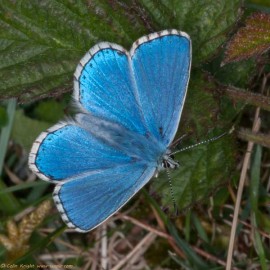
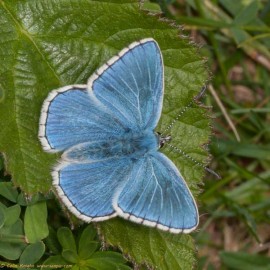
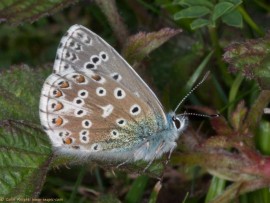
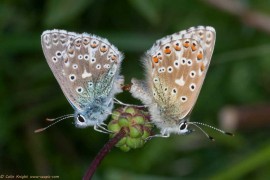
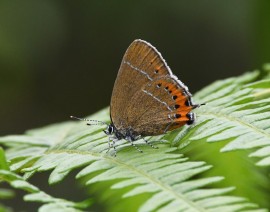
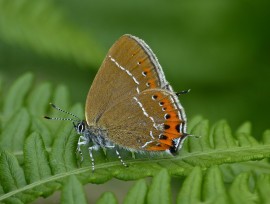
-1613313253.jpg)
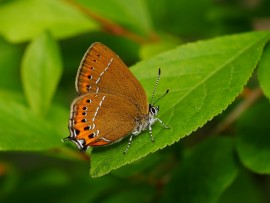
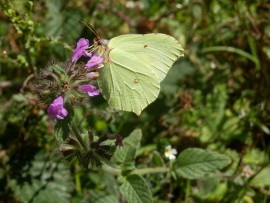
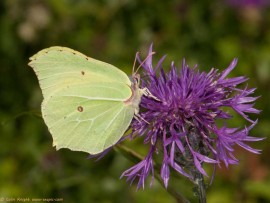
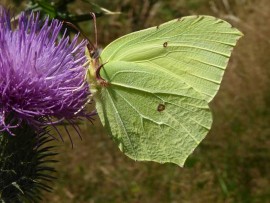
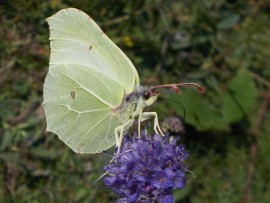
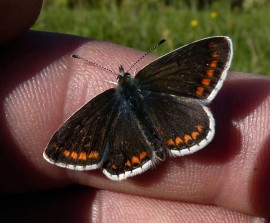
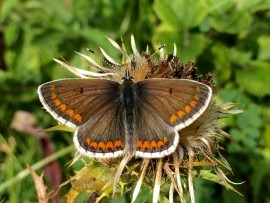
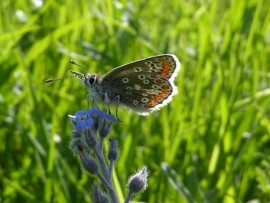
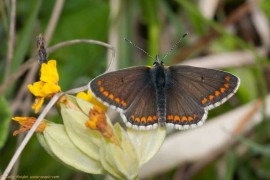
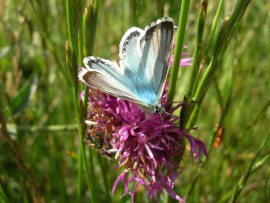
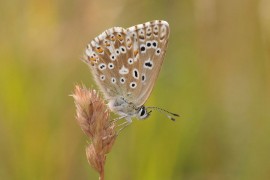
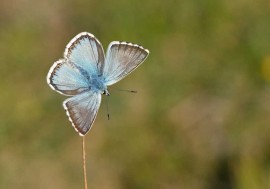
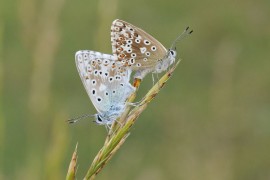
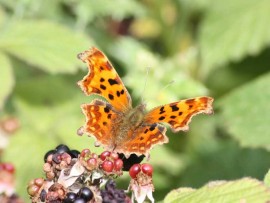
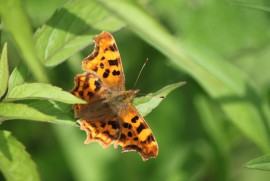
-7821614337-3793578674.jpg)
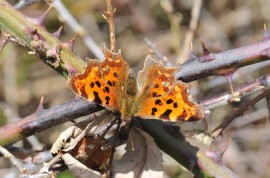
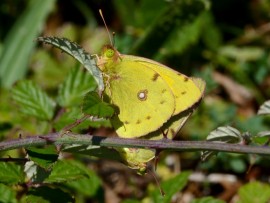
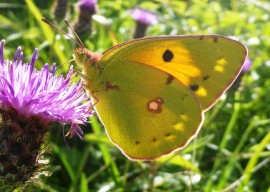

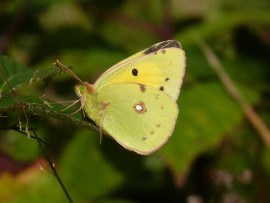
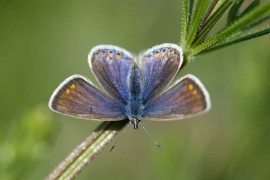
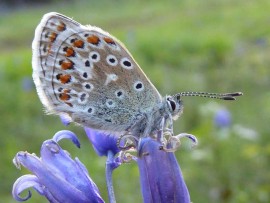
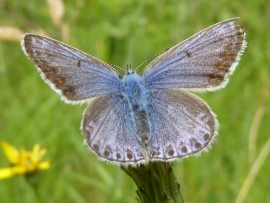
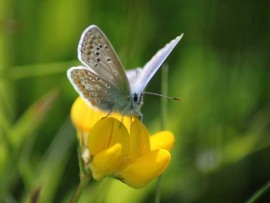

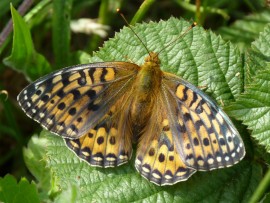

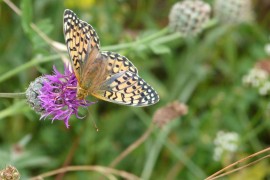


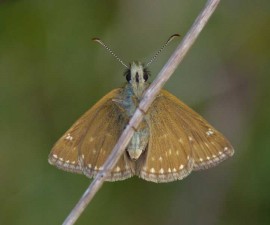
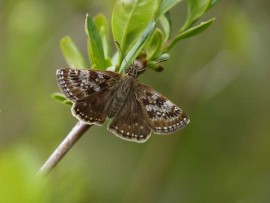
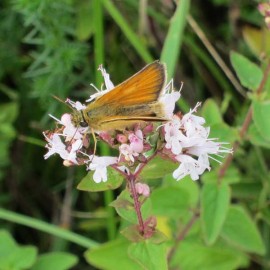
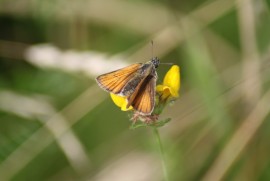
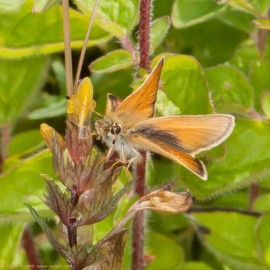
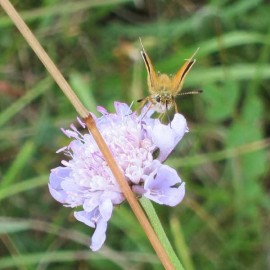
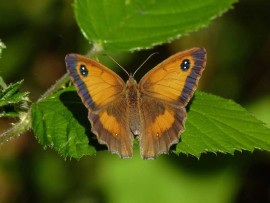
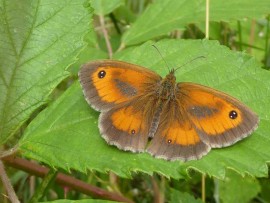
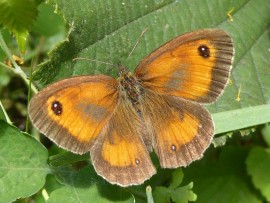
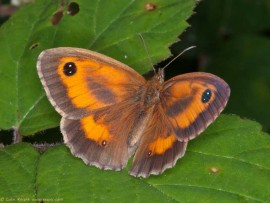
-1698184553-1478282432.jpg)
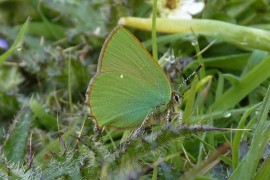
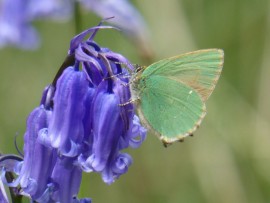

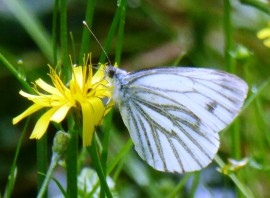
-5035632462-734374173.jpg)
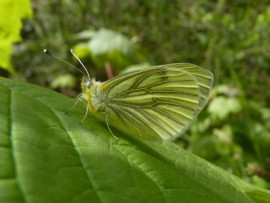
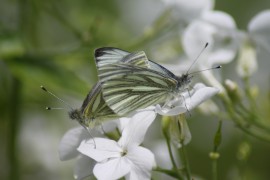
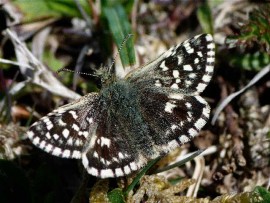
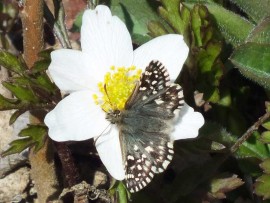

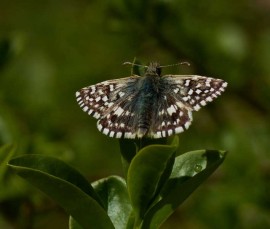
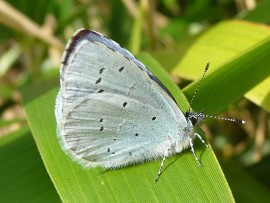
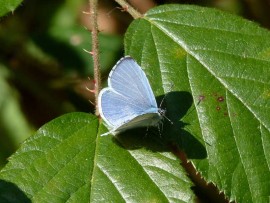
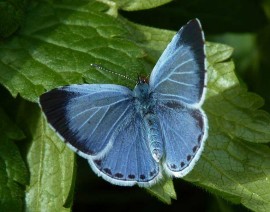
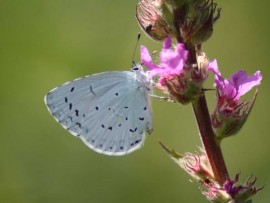
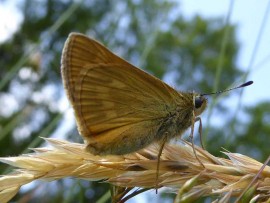
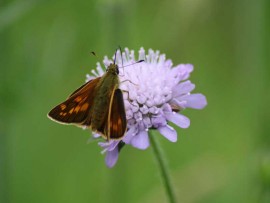
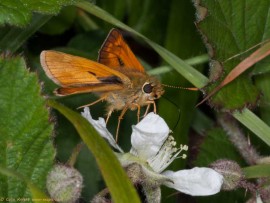
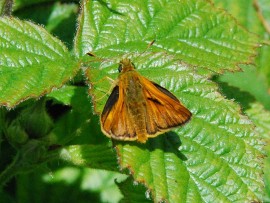
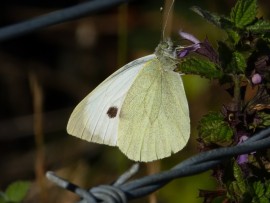
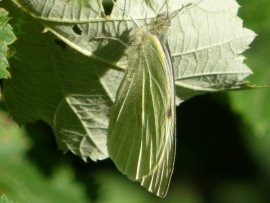
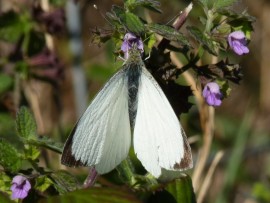
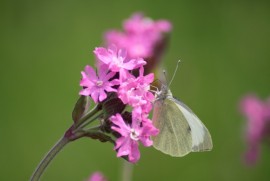
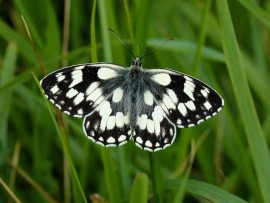
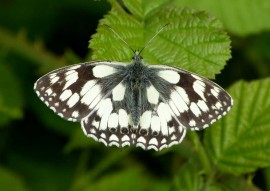
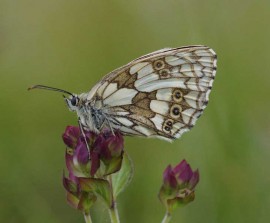
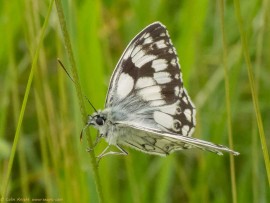
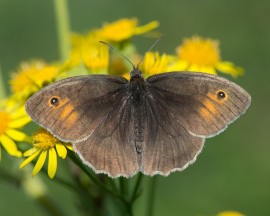
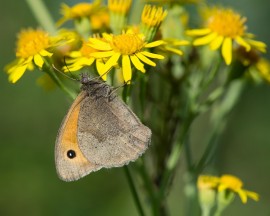
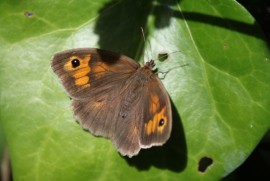
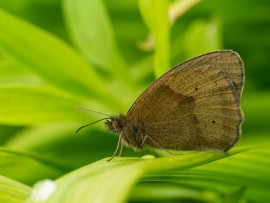
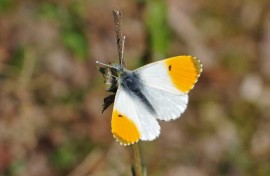
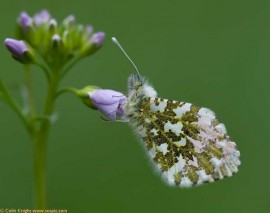
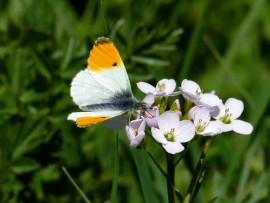
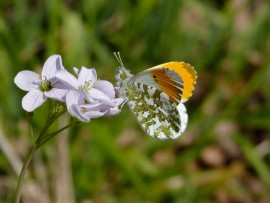
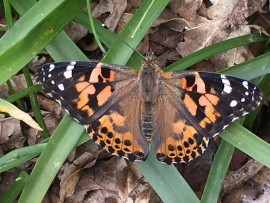
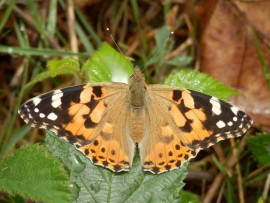
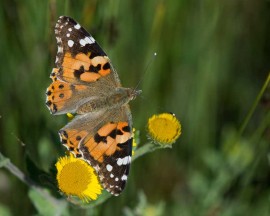
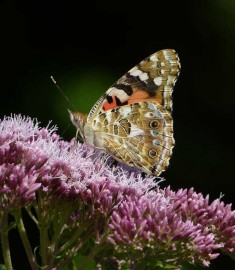
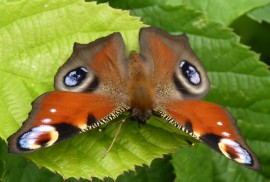
-6377034285-2670450848.jpg)
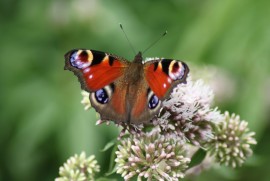

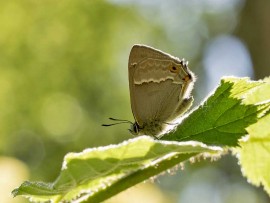
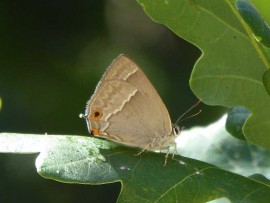
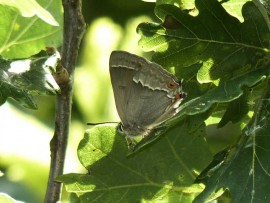
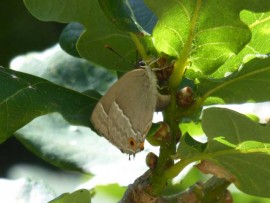
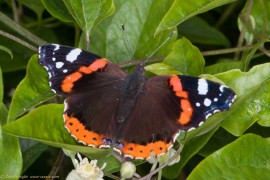
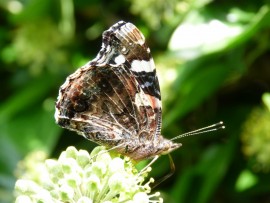
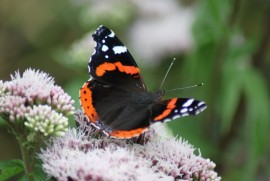
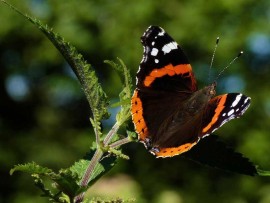

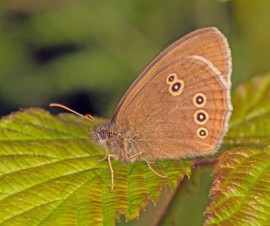
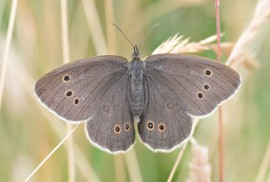
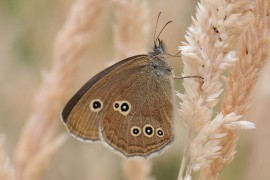
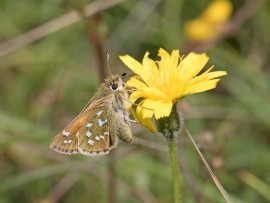
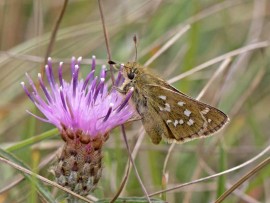
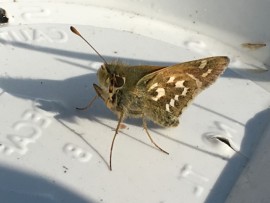
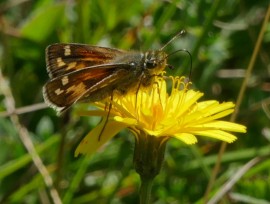
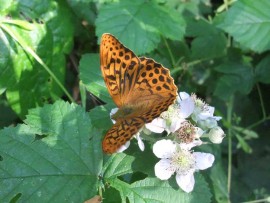
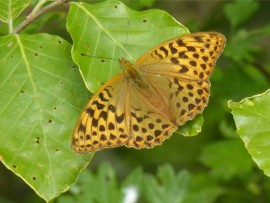
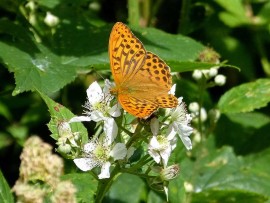
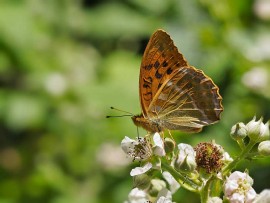
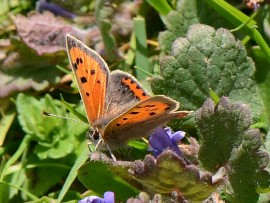
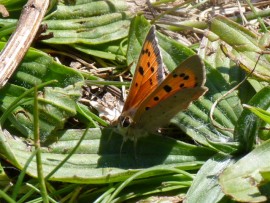
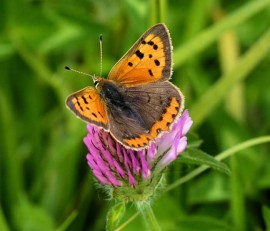
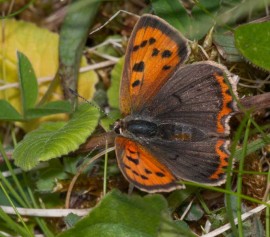
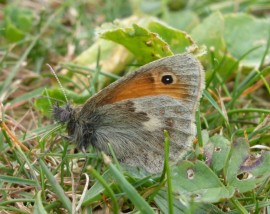
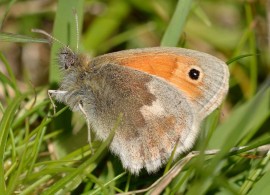
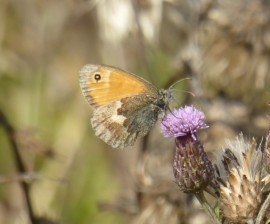
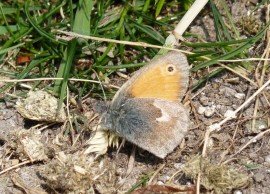
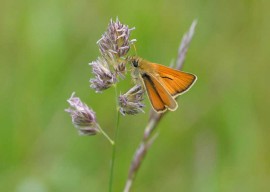
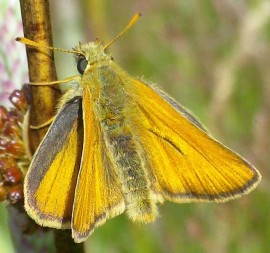
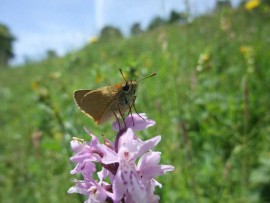
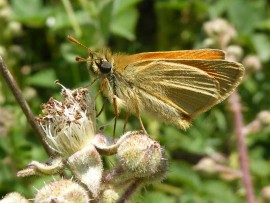
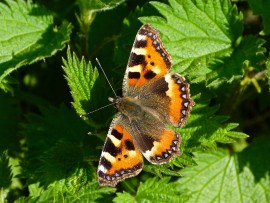
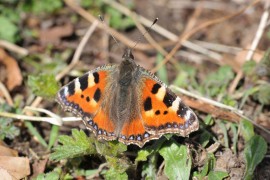
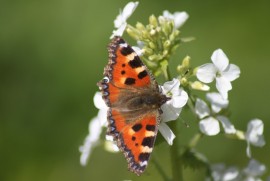
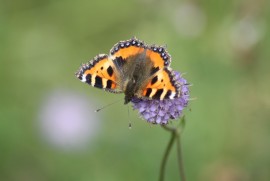
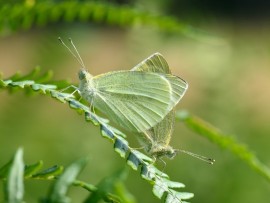
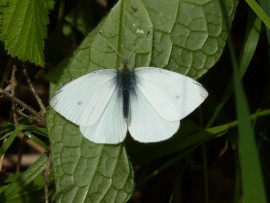
-1042304933-9668402145.jpg)
